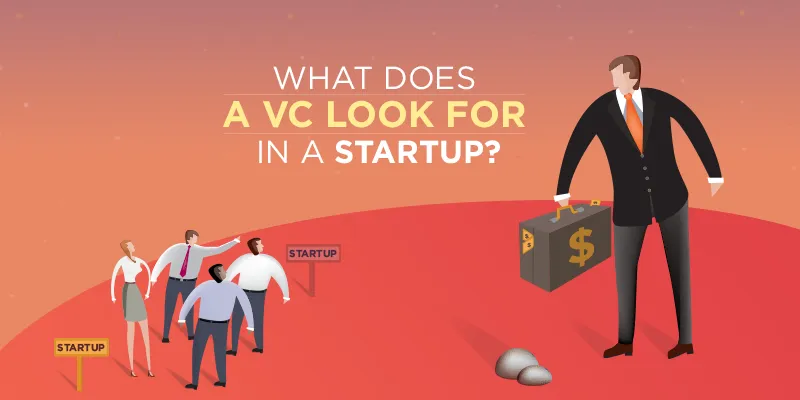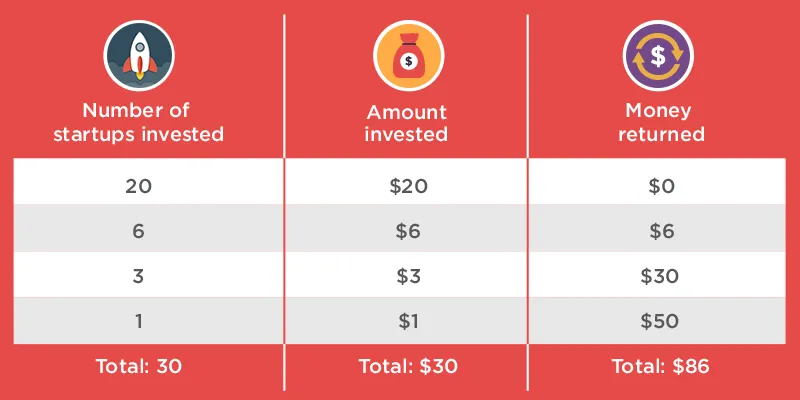The most intriguing question for early-stage entrepreneurs is most often, “What does a VC look for?” Two of the most common responses from VCs are that they’re looking for something that has a large market, and that they want to partner with great teams. Many entrepreneurs have told me that they have spent countless number of hours trying to understand why these (particularly #1) matter so much. After all, what should matter is profitability, right?
I too wondered about these questions for years, and I was fortunate enough to have interacted with few dozen venture capitalists during my tenures at Google, redBus and FreeCharge. In the world of business, when you need to understand how someone thinks, it’s a good idea to understand that person’s business structure. So in my interactions with VCs, I tried to understand the dynamic of a venture capital (VC) fund and discovered quite a few actionable insights. Based on that, I’d like to share a framework on what a VC thinks considers when exploring a potential investment (particularly in India), especially in the context of the two common responses from VCs, as described above.

At its core, every VC firm also has investors of its own, typically known as LPs (limited partners). LPs ‘lend’ money to a VC firm for a long but specified duration (typically 8-10 years). During this time, the VC firm is expected to invest money in promising startups, which are expected to become valuable businesses. Once the investment matures, the VC firm is expected to sell its stake in those companies and return money back to the LPS.
Naturally, because a limited partner lends money to a VC firm, it expects a healthy return on its investment. So a VC firm has fiduciary responsibility for this money and has to put in all the effort required to return the money to LPs with appropriate returns. Imagine the future of a fund that fails to return money to its LPs; such a fund will lose the trust of its LPs and the LP is unlikely to lend the VC firm any more money.
During these 8-10 years, the VC firm is expected to return at least 3x the investment. This is hardly an easy task. Devaluation of the Indian Rupee against the USD further increases the difficulty; at the very least, the ability to return this money becomes a matter of survival for a VC firm.
How the fund works across investments
For our discussion, let's take a fictional VC firm, say “ABC Capital”, which raises $30 across its LPs to invest in startups (typically a couple of dozen startups). Let's assume ABC Capital invests this money of $30 equally across 30 startups (i.e. $1 per startup) and takes 20% ownership of each company in lieu of this investment.
As time goes by, not everything goes well in all investments. Some startups fail to raise follow-on rounds, others fail to find a product-market fit and yet others will see founders fight and separate – on average, most of these 30 investments will fail.
If we go by the typical industry benchmark numbers for a portfolio, 65% of investments will go bust; i.e. 20 investments out of 30 will result in nothing. Another 20% will just barely return the principal; i.e. 6 investments out of 30 will return the money invested. Another 10% of startups will succeed and generate 10x returns for ABC Capital; i.e. 3 startups will return $10 each. The remaining 5% of startups, i.e. one out of a portfolio of 30 companies, may become a multi-bagger and return 50x; i.e. return $50.
So this is how ABC Capital’s hypothetical portfolio will look like:

Now comes the interesting part! When ABC Capital invests in these 30 startups, it has no way of knowing which of those 30 companies will result in 50x returns and which ones will not return any money. Had it known this a priori, the folks at ABC Capital would have set up the 50x startup themselves!Overall, our hypothetical portfolio will return 2.9x the money that was invested. As you can see, this barely reaches the acceptable level of return, and hence ABC Capital won’t qualify as a great VC firm.So when ABC Capital makes an investment, it needs to have complete conviction that each of those 30 investments will result in 10x gain and also hope to be lucky enough that one of those 30 investments will result in gigantic returns. This is the only way to create a healthy return for the overall portfolio.
Now let's put this in perspective from the startup’s side. A $1 investment in company for 20% ownership will mean that company is valued $4 before a sale or listing or $5 after. To generate 10x for a $1 investment, the startup needs to become a $50 company. Let’s extend this example to more realistic numbers. Let’s assume a $5M round of seed funding. This will necessitate the startup to become at least a $250M company. So every single company being invested in should have genuine potential to become a $250M company.
There is no way for a company to achieve those figures unless it operates in a really large market. If we assume that a successful company will capture 20% of the overall market, then the overall market size has to be at least $1.25B. Now you see why the large market size becomes the most important question when investing in any company. If you don’t invest in large market then you are fundamentally setting yourself up for failure as the investment won’t grow 10x irrespective of everything else going great for the startup.
Now let's assume you have done great job at pitching and ABC Capital is convinced that your startup is operating in a really large market. Now what else would ABC Capital need to get convinced about for before giving you the cheque?
Reaching that $250M mark will be a time-consuming process spanning across 5-8 years (please remember that recent hyper-valuation rounds where a company reaches a $250M valuation in 6 months is not the norm). Venture capitalists at ABC Capital are not the guys who can manage a startup’s day-to-day operations. That is the entrepreneur's job! And this journey of 5-8 years is going to be full of ups and downs. In such a scenario, ABC Capital would like to be satisfied on three more key questions about the entrepreneur.
(A) Does this team have skills or ability to figure things out? Generally it’s very difficult to hire great talent into a startup early on. Founders have to possess the skills and capability to operate startup until it becomes a real business. They have to be able to attract talent around them. If founders fail to execute then there are very few people in the world who can rescue the startup.
(B) Is this team going to survive through the bad times? You don’t want to be left with a company where founders leave when the going gets tough. If a founder loses motivation and moves on, the whole company will become a liability for the investor. Over time, investors will end up owning a majority of the company and hence will have more to lose.
(C) Is the entrepreneur intellectually honest? This is an obvious attribute to look for whenever you are giving your money to someone. After funding, the cheque signing authority moves to entrepreneur who can use money in many different ways. ABC Capital won’t be happy if the entrepreneur keeps showing hockey-stick growth but actually simply keeps buying business.
This framework provides entrepreneurs a few points to think about too. “Is the market really large?”, or “Do I have what it takes to execute?” Because if the genuine answers to these questions are negative, then there is very little chance that entrepreneur will make it big. It is probably quite easy to fool someone in ABC Capital on these questions but over time, reality does catch up, and at that time entrepreneur is the first one to lose (he or she also has the most to lose). Little wonder then, that VCs always look for great teams to partner with.
Disclaimer:
- Read my personal views on various things related to the world of startups at alokg.com.
- The math described above for a typical venture capital firm is overly simplified. There are many technicalities which make the real math more complex such as follow-on rounds causing dilution for investors, what happens if an investor doesn’t participate in follow-on rounds, more investors coming aboard in successive rounds etc. This math was only intended to demonstrate the point in a directional way and it is sufficient for that purpose.
- I’ve written this as an individual and the article has no connection to any of organizations that I am engaged with or have been in the past.







